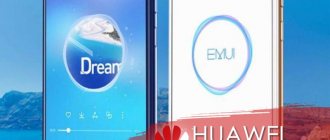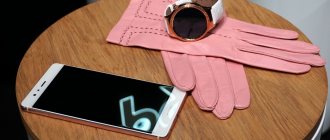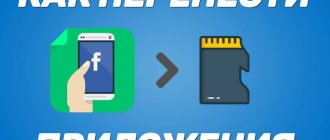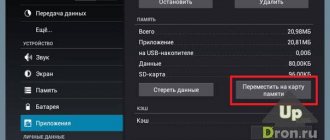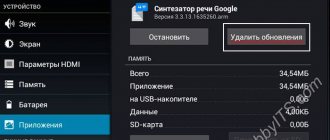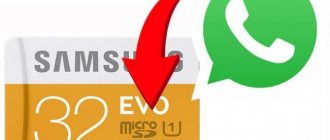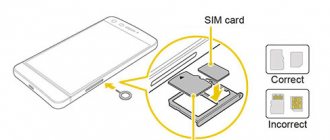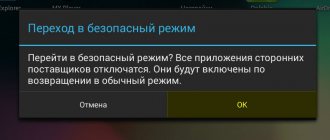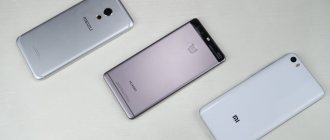Every day we use our smartphones to communicate via messages, make phone calls, and go online. But we also use our smartphones as a small computer. We watch films, listen to music, take photographs. All its apps can quickly take up memory on your Huawei and clutter up your storage space. Using an sd memory card will quickly spark interest to save memory in your Huawei. On the other hand, which SD memory card should you choose for your Huawei? In this tutorial, we will tell you about various SD pu rather than micro SD cards that are fully compatible with your Huawei and thus increase your storage capacity.
What SD memory cards are available for Huawei?
An sd memory card is a memory card that you can add to your Huawei. But you won't be able to put an SD card on your android. Only microSD cards will be compatible with your Huawei. The microSD memory card is smaller than the SD card and miniSD memory card. We will tell you about the characteristics of SD cards. The more storage space and faster read and write speeds your SD memory card has, the more it costs. If you have recovered an SD memory card from someone, you will probably need to format that SD card to make it compatible with your Huawei.
Basic micro SD cards with different memory capacities
- SD: will have a capacity of up to two GB
- SDHC: storage capacity from two to 32 GB
- SDXC: 32GB to 2TB storage available
- SDUC: memory capacity from two to 128 TB
SD card write speed
This number is usually circled. The number corresponds to the write speed. Specifically, the number 4 in the circle means the write speed is 4 MB/s.
UHS, Ultra High Speed
You will have three UHS categories, logo in Roman numerals:
- UHS-1:I
- UHS-2:II
- UHS-3:III
How to connect a flash drive to a Huawei tablet
To open a USB flash drive on a Huawei tablet, follow the simple tips detailed below.
- Take the OTG wire and connect it to the equipment.
- A notification about connecting gadgets will appear on the display.
- If the text “Unable to connect USB drive” appears on the screen, reboot the system.
- Download and install one of the explorers (for example, Total Commander).
- Identify the files you need and drag them onto your device.
Why Google Installer does not install and does not load services: reasons, how to fix it?
Do not touch the mediapad during the procedure. Otherwise the process will pause.
Which microSD card should I choose for my SD card?
You won't choose the same SD card depending on whether you only want to store folders or whether you want to use that SD card to run apps or watch video clips.
Cheap microSD card for Huawei
MicroSD ScanDisk 32 GB memory card microSDHC Ultra memory card is an entry-level microSD card. This will allow you to record and view video clips in Full HD 1080p. Its speed class is 10 MB/s. You will be able to record about 32GB. Read speed 100 MB/s.
View price on Amazon
Mid-range Micro SD memory card with very good speed for your Huawei
In Generica Class 10, the high-speed micro SD card is a high-speed class 10 microSD card, that is, 10 MB/s. The storage capacity allows you to store your photos and video clips to save space on your Huawei. Its write speed will be 10 MB/s. This will serve for Full HD 1080p viewing.
View price on Amazon
Ultra-fast microSD memory card for Huawei
The SanDisk Extreme 128GB MicroSDXC Memory Card is a great micro SD memory card at a really reasonable price. This card can store up to 128GB. The read and write speed is really fast, V30 (30MB/s). You can use it to launch applications, watch video clips in 4K high definition. Read speed 160 MB/s.
View price on Amazon
Review of the 10.8-inch Huawei MatePad Pro tablet
The tablet market has been in approximately the same state for several years now: there are no breakthroughs here, the leader - Apple - has not changed, but several of its competitors regularly release new products that are in many ways not inferior to Apple flagships, but are sold much cheaper. So the new second-generation iPad Pro has something to compare with: Huawei MatePad Pro is positioned as a direct competitor to the 11-inch version of iPad Pro, but taking into account discounts on the official Huawei website, it costs almost half as much. Let's figure out why it is better and why it is worse than the iPad Pro we recently tested.
At the time of publication of the review, a model with a memory capacity of 128 GB and without an LTE module could be purchased in the Huawei online store for 38 thousand rubles (43 thousand with the M-pencil stylus or with the Smart Magnetic Keyboard cover). The second generation iPad Pro in a similar configuration costs 70 thousand on the official Apple website; if you want to equip the iPad Pro with a stylus, you will have to pay another 11.5 thousand, and the keyboard cover will cost even more. How justified is this price difference?
Specifications
First, let's look at the technical characteristics of both models.
| Huawei MatePad Pro | iPad Pro 11″ second generation (2020) | |
| Screen | IPS, 10.8″, 2560×1600 (279 ppi) | IPS, 11″, 2388×1668 (264 ppi) |
| SoC (processor) | Huawei Kirin 990 (8 cores, 2+2+4, maximum frequency 2.86 GHz) | Apple A12Z Bionic (8 cores, 4+4, maximum frequency 2.49 GHz) |
| Flash memory | 128 GB | 128 / 256 / 512 GB / 1 TB |
| Memory card support | yes (NM standard, up to 256 GB) | via third-party USB-C adapters |
| Connectors | USB-C with external storage support | USB-C with external storage support |
| Cameras | front (8 MP, 1080p video) and rear (13 MP, ƒ/1.8, 4K video shooting) | front (7 MP, 1080p video via FaceTime) and two rear (wide-angle 12 MP ƒ/1.8 and ultra-wide-angle 10 MP ƒ/2.4, 4K video shooting on all, stabilization in 1080p and 720p modes) |
| Internet | Wi-Fi 802.11 a/b/g/n/ac/ax MIMO (2.4 + 5 GHz), optional LTE | Wi-Fi 802.11 a/b/g/n/ac/ax MIMO (2.4 + 5 GHz), optional LTE |
| Scanners | face recognition | Face ID (facial recognition), LiDAR (3D interior scanning) |
| Keyboard cover and stylus support | There is | There is |
| Battery | 7250 mAh | 7540 mAh (unofficial information) |
| Dimensions | 246×159×7.2 mm | 248×179×5.9 mm |
| Weight of version without LTE | 460 g | 471 g |
| Retail offers for version without LTE, 128 GB of memory | find out the price | find out the price |
| Retail offers for version with LTE, 128 GB of memory | find out the price | find out the price |
As we can see, from this table it is quite difficult to draw any clear conclusions about the superiority of one or another model. In most characteristics they are very similar, and those differences that exist do not in themselves say much. For example, what is better - the ability to choose a larger amount of built-in flash memory or support for memory cards of the atypical NM format? SoC Huawei Kirin 990 or Apple A12Z Bionic? Finally, less weight (by 11 g) or less thickness (by 1.3 mm)?
We will try to answer these questions in our testing.
Packaging and equipment
The tablet comes in a predominantly white box. It looks good, but not as stylish as Apple products. Along with the tablet, we also received the M-pencil stylus. Its packaging evokes a similar feeling.
Inside the box with the tablet, a 5 V 2 A charger was found, which also supports fast charging (9 V 2 A), a USB-C cable, a key for removing the memory card tray and SIM card, as well as (and thanks for this !) adapter from USB-C to mini-jack (3.5 mm).
In general, despite the fact that there is nothing out of the ordinary here, the kit should be considered successful: both the adapter and the fast charger are evidence of the manufacturer’s care for its users.
Since the stylus comes as a gift with the tablet, it can be considered part of the package, so let's look at it too.
The box contains the stylus itself, a replacement tip and leaflets. The stylus is made of plastic and fits quite comfortably in the hand.
Design
The appearance of the tablet is strict and minimalistic. Like the iPad Pro, the thickness of the frame is the same on all sides of the screen, but the frame itself is significantly narrower: about half. It looks great, of course.
However, due to the narrowness of the frame, the front camera had to be moved to the main space of the screen. It turns out that there is a small hole right in the image itself. It’s difficult to say which option is better - when the peephole is hidden, but the frame is wider, or like this. In any case, Huawei's solution is not without grace.
Of course, there are no buttons on the front surface - the tablet is a flagship one. Therefore, instead of a fingerprint scanner, facial recognition is used, which, apparently, is assigned to the same front camera (while the iPad Pro has a separate module for this - Face ID).
Note that the initial facial scan is slower and less smooth than on the iPad and iPhone, but there were no further problems with recognition.
The edges are made of plastic and rounded. The buttons are located on the left and top sides: power on/off and volume rocker, respectively.
On the right is a USB-C connector, and at the bottom is a slot for Nano-SIM and memory cards of the NM (Nano Memory) standard, which for some reason is used by Huawei instead of microSD. I must say, this is a very dubious innovation. At the time of writing, both the official online store of the manufacturer and large resellers did not have such cards in stock (everywhere it said: the product is sold out). In addition, the price of such a card was almost 6,000 rubles for 128 GB at a speed of 90 MB/s. For comparison, microSD cards with the same capacity and an adapter to SD can now be bought for 2000-3000 rubles, and their speed will be 100 MB/s (UHS-I Class 3).
The sound part is of particular interest. Firstly, there are Harman Kardon stereo speakers - two each on the left and right sides. The sound is quite spacious and clear, although it still lacks depth. This is one of the best and loudest tablets we've ever tested.
Secondly, there are already four microphones here - they are located along the top edge at the same distance from each other.
And thirdly (this is not a plus, but a minus), there is no 3.5 mm jack for connecting headphones. Which, of course, is sad. Apparently, this decision is due to the desire for a minimum thickness of the case, although it is still slightly thicker than the iPad Pro: 7.2 versus 5.9 mm.
The entire back surface is covered with a plastic cover, the matte surface of which, however, looks very noble. The single camera, flash and microphone are located on a strongly protruding block. But it is quite compact, and this should not cause any major inconvenience.
Screen
The tablet display has a diagonal of 10.8 inches and a resolution of 2560×1600. This results in an even slightly higher pixel density than on the 11-inch iPad Pro. However, as we know, the quality of the screen is determined not only by this parameter.
The front surface of the screen is made in the form of a glass plate with a mirror-smooth surface that is scratch-resistant. Judging by the reflection of objects, the anti-glare properties of the screen are slightly better than those of the Google Nexus 7 (2013) screen (hereinafter simply Nexus 7). For clarity, here is a photo in which a white surface is reflected when the screens are turned off (on the left is Huawei MatePad Pro, on the right is Nexus 7, then they can be distinguished by size):
The screen of the Huawei MatePad Pro is slightly darker (brightness according to photographs is 109 versus 111 for the Nexus 7). The ghosting of reflected objects in the Huawei MatePad Pro screen is very weak, this indicates that there is no air gap between the layers of the screen (more specifically, between the outer glass and the surface of the LCD matrix) (OGS - One Glass Solution type screen). Due to the smaller number of boundaries (glass/air type) with very different refractive indices, such screens look better in conditions of intense external illumination, but their repair in the case of cracked external glass is much more expensive, since the entire screen has to be replaced. On the outer surface of the screen there is a special oleophobic (grease-repellent) coating, which is better in efficiency than that of the Nexus 7, so fingerprints are removed much easier and appear at a lower speed than in the case of regular glass.
When displaying the white field in full screen and manually controlling the brightness, its maximum value was 460 cd/m² under normal conditions, but in very bright light in automatic mode it rises to 540 cd/m². The maximum brightness is very high, therefore, given the excellent anti-glare properties, screen readability even on a sunny day outdoors should be at a good level. The minimum brightness value is 2.3 cd/m². In complete darkness, the brightness can be reduced to a comfortable value. There is automatic brightness adjustment based on the light sensor (it is located on the upper edge of the front panel close to the left corner in landscape orientation). In automatic mode, as external lighting conditions change, the screen brightness both increases and decreases. The operation of this function depends on the position of the brightness adjustment slider: with it the user can try to set the desired brightness level in the current conditions. If you leave everything at default, then in complete darkness the auto-brightness function reduces the brightness to 3 cd/m² (very dark), in an office illuminated by artificial light (approximately 550 lux) it sets it to 260 cd/m² (normal), in a very bright environment ( conditionally corresponds to being in direct sunlight) increases to 540 cd/m² (to the maximum, as needed). We were not entirely satisfied with the result, so we slightly increased the brightness in complete darkness, ultimately obtaining the following values for the three conditions indicated above: 10, 275, 540 cd/m² (excellent). It turns out that the auto-brightness function works adequately and allows you to customize your work to individual requirements.
This tablet uses an IPS matrix. The microphotographs show a typical IPS subpixel structure:
For comparison, you can see the gallery of microphotographs of screens used in mobile technology.
The screen has good viewing angles without significant color shift even with large viewing deviations from perpendicular to the screen and without inverting shades. For comparison, here are photographs in which the same images are displayed on the screens of Huawei MatePad Pro and Nexus 7, while the screen brightness is initially set to approximately 200 cd/m², and the color balance on the camera is forced to switch to 6500 K.
There is a white field perpendicular to the screens:
Note the good uniformity of brightness and color tone of the white field.
And a test picture:
The colors on the Huawei MatePad Pro screen are clearly oversaturated, and the color balance varies greatly between screens. Let us remind you that the photograph cannot serve as a reliable source of information about the quality of color rendering and is provided only for conditional visual illustration. The reason is that the spectral sensitivity of the camera sensor does not exactly match this characteristic of human vision.
Now at an angle of approximately 45 degrees to the plane and to the side of the screen:
It can be seen that the colors have not changed much on both screens, but on the Huawei MatePad Pro the contrast has decreased to a greater extent due to the greater highlighting of blacks.
And a white field:
The brightness at an angle of the screens has decreased (by at least 4 times, based on the difference in shutter speed), but the Huawei MatePad Pro's screen at this angle is slightly brighter. When deviated diagonally, the black field brightens greatly and acquires a slightly reddish tint. The photographs below demonstrate this (the brightness of the white areas in the direction perpendicular to the plane of the screens is the same!):
And from another angle:
When viewed perpendicularly, the uniformity of the black field is average, since closer to the edges the screen brightens a little in places:
The contrast (approximately in the center of the screen) is high - about 1200:1. The response time for the black-white-black transition is 20 ms (10 ms on + 10 ms off). The transition between halftones of gray 25% and 75% (based on the numerical value of the color) and back takes a total of 34 ms. The gamma curve, constructed using 32 points with equal intervals based on the numerical value of the shade of gray, did not reveal any blockage in either the highlights or the shadows. The exponent of the approximating power function is 2.09, which is slightly lower than the standard value of 2.2. In this case, the real gamma curve noticeably deviates from the power-law dependence:
This is due to the fact that this device has a dynamic adjustment of the backlight brightness with an unobvious dependence on time and on the nature of the displayed image. As a result, the resulting dependence of brightness on hue (gamma curve) may not correspond to the gamma curve of a static image, since the measurements were carried out with sequential display of shades of gray on almost the entire screen. For this reason, we carried out a number of tests - determining contrast and response time, comparing black illumination at angles - (however, as always) when displaying special templates with a constant average brightness, and not monochromatic fields in the entire screen. In general, such non-disabled brightness correction does nothing but harm, since constantly changing the screen brightness can at least cause some discomfort.
The color gamut is wider than sRGB and almost equal to DCI:
Let's look at the spectra:
The spectra of the components are quite well separated, which determines the wide color gamut. For a consumer device, a wide color gamut is a disadvantage because it results in unnaturally saturated colors in images—drawings, photographs, and movies—that are oriented to the sRGB space (which is the vast majority of them). This is especially noticeable on recognizable shades, such as skin tones. The result is shown in the photographs above.
However, not everything is so bad: when you select the Normal , the coverage is compressed to the sRGB boundaries.
Colors in images become less saturated (and color balance changes slightly):
The balance of shades on the gray scale after selecting the Usual is a compromise, since the color temperature is significantly higher than the standard 6500 K (about 8200 K on a white field), but the deviation from the blackbody spectrum (ΔE) is about 2 (also on white), which even for professional device is considered an excellent indicator.
This device has the ability to adjust the color balance by adjusting the hue on the color wheel or simply by selecting one of three preset profiles.
In the graphs below, the curves correspond to the results obtained after selecting the Normal and manual color balance correction (the point on the correction circle is like in the picture above). (The darkest areas of the gray scale can be ignored, since color balance there is not very important, and the error in measuring color characteristics at low brightness is large.)
It can be seen that the change in balance corresponds to the expected result, since ΔE decreased and the color temperature approached the standard 6500 K. There is some benefit from such a correction, although the correction range was not enough to reduce the color temperature to 6500 K. Note that this function implemented in this version rather for show, since there is no numerical reflection of the correction and there is no special field for measuring color balance.
There is a fancy setting that allows you to reduce the intensity of the blue component.
Marketers tried to intimidate the user in order to show the level of care of the manufacturer. Of course, there is no UV radiation (see spectrum above), and there is no eye fatigue caused specifically by blue light. In principle, bright light can lead to disruption of the circadian rhythm (see the article about the iPad Pro with a 9.7-inch display), but everything can be solved by adjusting the brightness to a comfortable level, and there is absolutely no way to distort the color balance, reducing the contribution of blue sense.
There is a function Natural tone , which, if enabled, adjusts the color balance to environmental conditions.
For example, we activated it and placed the tablet under LED lamps with cool white light, resulting in values of 3.4 for ΔE and 8000 K for color temperature. Under a halogen incandescent lamp (warm light) - 2.8 and 6780 K, that is, the color temperature has become lower. The function works as expected. Note that the current standard is to calibrate display devices to a white point of 6500 K, but in principle, correction for the color temperature of external light can be useful if you want to achieve a better match between the image on the screen and what is visible on paper (or any other device). a medium on which colors are formed by the reflection of incident light) under current conditions.
To summarize: the screen has a very high maximum brightness (540 cd/m²) and has excellent anti-glare properties, so the device can be used outdoors without any problems, even on a sunny summer day. In complete darkness, the brightness can be reduced to a comfortable level (up to 2.3 cd/m²). It is also possible to use a mode with automatic brightness adjustment, which works adequately. Also, the advantages of the screen include an effective oleophobic coating, the absence of air gaps in the layers of the screen and flickering, high contrast (1200:1), sRGB color gamut and good color balance (when choosing the right profile and after a small correction). The disadvantages are the low stability of black to the deviation of the gaze from perpendicular to the screen plane. Considering the importance of characteristics for this particular class of devices, the quality of the screen can be considered very high.
Performance
The tablet runs on Huawei's own SoC - Kirin 990. Interestingly, the data from the CPU-Z utility that we installed on the MatePad Pro and on Huawei's official website about this chip are slightly different. The SoC is stated to use two Cortex-A76 cores @ 2.86 GHz, two Cortex-A76 cores @ 2.09 GHz and four Cortex-A55 cores @ 1.8 GHz. CPU-Z describes the configuration differently: four Cortex-A55 cores @ 2.86 GHz and four unspecified 1.86 GHz processor cores.
The GPU here is a 16-core Mali-G76 with a frequency of 600 MHz. The tablet is also said to have a “dual neural processor.” The amount of RAM is 6 GB (5.7 GB according to the CPU-Z version).
Well, let's test the model and compare it with the iPad Pro. Let's start with browser tests: SunSpider 1.0.2, Octane Benchmark, Kraken Benchmark and JetStream 2 (note that we are now using the second version of JetStream). All tests on the iPad Pro were performed in Safari on the current version of iPadOS: 13.4; on the MatePad Pro we used Chrome. Results were rounded to whole numbers.
| Huawei MatePad Pro (Huawei Kirin 990) | Apple iPad Pro 11″ (2020) (Apple A12Z Bionic) | |
| SunSpider 1.0.2 (ms, less is better) | 434 | 124 |
| Octane 2.0 (points, more is better) | 21766 | 42699 |
| Kraken Benchmark 1.1 (ms, lower is better) | 2761 | 658 |
| JetStream 1.1 (points, more is better) | 55 | 274 |
Well, the picture is clear: in browser benchmarks, the Huawei tablet shows results several times lower than the iPad Pro.
Now let's see how the tablets perform in Geekbench 5 - a multi-platform benchmark that measures the performance of the CPU and RAM, and from the fourth version - also the computing capabilities of the GPU). Plus, we haven’t forgotten about the comprehensive AnTuTu Benchmark.
| Huawei MatePad Pro (Huawei Kirin 990) | Apple iPad Pro 11″ (2018) (Apple A12X Bionic) | |
| Geekbench 5 Single-Core Score (scores, higher is better) | 760 | 1110 |
| Geekbench 5 Multi-Core Score (scores, higher is better) | 2920 | 4632 |
| Geekbench 5 Compute (scores, higher is better) | 3564 | 9290 |
| AnTuTu Benchmark (scores, more is better) | 461860 | 561107 |
Here the gap is not so great, but it is still undoubtedly there. Judging by Geekbench processor tests - about one and a half times, judging by AnTuTu - about one fifth. But the results of calculations using GPU (OpenCL) from Huawei are much worse - almost three times.
However, this is a more exotic scenario for using the GPU in a mobile device than 3D games. To check their performance, we use multi-platform 3DMark. We are interested in the Sling Shot Extreme mode (results in points).
| Huawei MatePad Pro (Huawei Kirin 990) | Apple iPad Pro 11″ (2020) (Apple A12Z Bionic) | |
| 3DMark (Sling Shot Extreme mode) | 5693 | 6795 |
There is again a lag from the iPad Pro, but not as critical - as in AnTuTu, about one fifth.
In general, the picture is clear. Despite the fact that the maximum CPU frequencies in the Huawei SoC are higher than in the Apple SoC, it is the processor performance that is undoubtedly better in the iPad Pro. In games, the difference will not be so great, although here the MatePad Pro lags behind the leader.
Playing video
This device supports DisplayPort Alt Mode for USB Type-C - outputs image and sound to an external device when connected to a USB port (usbview.exe program report). We tested operation in this mode together with the Dell DA200 adapter. When connected to our monitor, video output is in 1080p mode at 60 Hz frame rate. There is only one operating mode - simple copying of the tablet screen; for some reason there is no alternative desktop output mode, although even the MediaPad M6 10.8 has it. There is a desktop mode on the tablet itself, but when connected to a monitor, the same simple copying of the tablet screen is performed.
When the tablet screen is in portrait orientation, the picture on the Full HD monitor is displayed inscribed in height and with wide black margins on the sides, and in landscape orientation - inscribed in width with narrow black margins at the top and bottom. There is no point-to-point output in both options. Note that simultaneously with image and sound output, you can connect a mouse and keyboard, USB flash drives, etc. to the tablet via USB, turning the tablet into a basis for a workstation, but for this, an adapter or monitor (with a USB Type-C input) must allow the connection of external USB devices (that is, have a USB hub). Connection to a wired network (1 Gbps) is also supported. To charge the tablet, you will need to connect a charger to the adapter/dock, and monitors with a USB Type-C input usually supply power to the tablet themselves.
To test the output of video files on the screen of the device itself, we used a set of test files with an arrow and a rectangle moving one division per frame (see “Method for testing video playback and display devices. Version 1 (for mobile devices)”). Screenshots with a shutter speed of 1 s helped determine the nature of the output of frames of video files with various parameters: the resolution varied (1280 by 720 (720p), 1920 by 1080 (1080p) and 3840 by 2160 (4K) pixels) and frame rate (24, 25, 30, 50 and 60 fps). In the tests we used the MX Player video player in the “Hardware” mode. The test results are summarized in the table:
| File | Uniformity | Passes |
| 4K/60p (H.265) | Great | No |
| 4K/50p (H.265) | Great | No |
| 4K/30p (H.265) | Great | No |
| 4K/25p (H.265) | Great | No |
| 4K/24p (H.265) | Great | No |
| 4K/30p | Great | No |
| 4K/25p | Great | No |
| 4K/24p | Great | No |
| 1080/60p | Great | No |
| 1080/50p | Great | No |
| 1080/30p | Great | No |
| 1080/25p | Great | No |
| 1080/24p | Great | No |
| 720/60p | Great | No |
| 720/50p | Great | No |
| 720/30p | Great | No |
| 720/25p | Great | No |
| 720/24p | Great | No |
Note: If both columns Uniformity and Skips have green ratings, this means that, most likely, when watching films, artifacts caused by uneven alternation and skipping of frames will either not be visible at all, or their number and visibility will not affect comfort viewing. Red marks indicate possible problems with playback of the corresponding files.
According to the criterion of frame output, the quality of playback of video files on the screen of the tablet itself is very good, since frames (or groups of frames) can (but are not required) be output with uniform alternation of intervals and without skipping frames. We note the good stability of these results; this is rare for Android tablets. When playing video files with a resolution of 1920 by 1080 pixels (1080p), the image of the video file itself is displayed exactly across the width of the screen, black bars are displayed at the top and bottom, and the hole in the screen does not enter the image output area, which somehow compensates for the presence of this hole.
The picture clarity is high, but not ideal, since there is no escape from interpolation to the screen resolution. However, for the sake of experimentation, you can switch to the one-to-one pixel mode; there will be no interpolation. The brightness range displayed on the screen corresponds to the standard range of 16-235: all gradations of shades are displayed in shadows and highlights. Note that this tablet has hardware decoding support for H.265 files with a color depth of 10 bits per color, while gradients are output to the screen with better quality than in the case of 8-bit files (however, this is not proof of true 10-bit output). Display of HDR files (HDR10, HEVC) is also supported.
Operating system and software
The tablet runs on Android 10.0 with Huawei's own EMUI 10.0.1 shell.
The Google Play store, as well as other Google services, is not here - everyone has heard about this, and we have repeatedly written in reviews of smartphones about the existing problem, but, alas, it is impossible not to repeat it. The problem, of course, is political, not technological, so it makes no sense to scold the manufacturer. You just have to keep this in mind. As an alternative, the tablet uses its own AppGallery store, and, in principle, a “gentleman’s” set of software for Android is presented there. For the rest, you can use installation from APK files or look for other stores. However, this does not always work with games.
Among the preinstalled software, I would like to draw your attention to applications for working with the stylus. By the way, it connects as easily as an Apple Pencil to an iPad Pro, and is no less convenient to use. In particular, it recognizes pressure and tilt angle. Perhaps artists or professional designers will have a different opinion; we are simply talking about the sensations from notes and amateur “handwriting”.
So, in addition to the standard notepad, there are two more advanced applications for the stylus: Nebo for Huawei and MyScript Calculator 2. The first of them is designed for notes with advanced editing capabilities. For example, you can cross out some text (and it will disappear), apply different formatting for handwritten lines, etc.
As for the MyScript Calculator 2 application, it will certainly be of interest to anyone who needs to work with mathematical formulas. The tablet recognizes and converts hand-drawn special characters into printed form, so writing complex formulas for a scientific article, report or abstract can become much easier. In addition, MyScript Calculator 2 can be used as a manual calculator. The screenshots below show what we wrote and displayed by the program.
Autonomous operation and heating
The tablet is equipped with a non-removable 7250 mAh battery, which is slightly smaller than the iPad Pro. However, what is more important is not even the nominal value, but how energy efficient the device is. Based on the results of testing using our method, it turns out that the Huawei MatePad Pro runs on battery for about the same amount of time as an Apple device.
| Huawei MatePad Pro (Huawei Kirin 990) | Apple iPad Pro 11″ (2020) (Apple A12Z Bionic) | |
| Watching online videos from YouTube (720p, brightness 100 cd/m²) | 9 hours 15 minutes | 10 hours 35 minutes |
| Reading mode (brightness 100 cd/m²) | about 22 o'clock | about 22 o'clock |
There is a lag in video viewing mode, while in reading mode the result is almost identical. In general, we can state that the situation with autonomy here is quite normal.
Below is a thermal image of the rear surface taken after 15 minutes of fighting a gorilla in Injustice 2:
The highest heating is near the USB input, where, apparently, the charging controller is located (the tablet was charging during the test). The second high heating area is located closer to the upper left corner (if you turn the tablet with the screen towards the user) - most likely it corresponds to the location of the SoC chip. According to the heat camera, the maximum heating in this area was only 34 degrees (at an ambient temperature of 24 degrees), which is relatively little.
When exposed to bright sun for a long time, the tablet overheats and a notification appears on the screen. However, the situation is the same with the iPad Pro.
Camera
The Huawei MatePad Pro tablet, unlike the new iPad Pro, has only one rear camera, but its resolution is 1 megapixel higher - 13 megapixels versus 12 megapixels for Apple's flagship. The lens aperture is the same: ƒ/1.8. In both cases, 4K video shooting is supported. We decided to compare both cameras head-to-head. Below are frames taken almost simultaneously with the main cameras of the devices: on the left - Huawei MatePad Pro, on the right - Apple iPad Pro (2020) . The originals are available by clicking, but do not pay attention to the different dates in Exif - apparently, the Huawei tablet received incorrect information from the operating system, where the date and time were not set correctly.
It can be seen that the iPad photo turned out lighter. In reality, the color is more correct on Huawei. But, say, in the pre-sunset time, the iPad Pro approach may be better. In addition, the MatePad Pro has a stronger bokeh effect. But overall, there is a feeling that the iPad Pro has a sharper picture.
Shooting against the light, in the pre-sunset time. An interesting result: subjectively, if you don’t zoom in, the iPad Pro has a slightly more beautiful picture, with more interesting colors. But once you look at the photo in full screen (at actual size), the noisiness of the frame taken on an Apple tablet becomes obvious. Pay attention to the crown of the light tree at the bottom left - on the iPad this is already some kind of post-impressionism. The situation is much better on the MatePad Pro.
An interesting result: subjectively, if you don’t zoom in, the iPad Pro has a slightly more beautiful picture, with more interesting colors. But once you look at the photo in full screen (at actual size), the noisiness of the frame taken on an Apple tablet becomes obvious. Pay attention to the crown of the light tree at the bottom left - on the iPad this is already some kind of post-impressionism. The situation is much better on the MatePad Pro.
And again the iPad Pro highlights the frame. But something else is interesting: we made six takes on a Huawei tablet, and in none of them were we able to get all the flowers clear. On some, two or three were blurred, on others, all of them. Whereas on the iPad Pro, with the same number of attempts, complete success was achieved in two cases, and in the rest, one or at most two flowers were blurred.
Here, of course, the winner is obvious. The sky color is correct on the right. And overall the picture looks much more beautiful and noble.
And now - a test for working with small parts. But it is very difficult to make a verdict. However, here both tablets were already highlighting the frame. And the next couple of pictures are the same view, but with the brightness artificially reduced so that it matches the real picture of the pre-sunset forest.
Again, we will refrain from drawing a definitive conclusion, but note that when viewed in real size, the picture on the iPad Pro looks a little better. Compare, for example, the two tree trunks on the right in the middle ground. However, in miniature it is the Huawei photo that is more advantageous - due to the more dramatic light (this is not only a spot of light on the ground, but also reflections on the bush on the right).
To summarize, in terms of photo quality, we would still give the palm to Apple, if only because out of six photos Huawei took, two turned out to be unsuccessful, while the competitor’s were all decent. But if we compare those scenes where both devices felt comfortable, it’s difficult to clearly choose a winner.
At the same time, the iPad Pro shoots in the HEIC format, which gives a much smaller file size with the same quality (the difference is on average one and a half times), but the JPEG format used in the Huawei tablet still remains more universal.
When it comes to shooting video, we tend to prefer the iPad Pro. Judging by the fact that in the Huawei video there is noticeable shaking of objects and problems with refocusing, and the file with a timing of 30 seconds and a resolution of 4K 30 fps takes up only 111 MB, while the Apple video takes 262.7 MB (with the same parameters) , The MatePad Pro simply shoots with a much lower bitrate.
conclusions
Despite all the noted shortcomings - the lack of Google services, imperfect camera performance, a non-standard memory card format (NM instead of microSD), lower performance - we must admit that Huawei has turned out to be a very decent tablet. Among its trump cards are its beautiful appearance, excellent screen and sound, full-fledged work with a stylus... And most importantly, of course, the price: not only is the device itself more than one and a half times cheaper than its main competitor, but also the accessories are much cheaper.
Yes, there may not be any advanced things like lidar or an ultra-wide-angle rear camera. But are they really necessary and is it worth overpaying for it? The question is. The iPad Pro remains the leader, but the Huawei MatePad Pro is a completely worthy alternative, significantly ahead of its American competitor in terms of price and capabilities.

